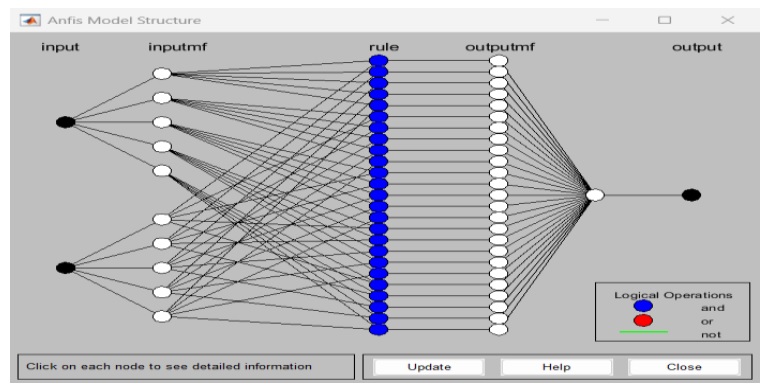Developing a Fuzzy Inference Model for Construction Project Risk Management in Iraq
DOI:
https://doi.org/10.51173/jt.v5i3.1478Keywords:
Risk Management, Risk Assessment, Probability, Fuzzy, Adaptive Neuro-Fuzzy Inference System (ANFIS)Abstract
The construction industry is considered a high-risk business. Risk management is one of the most influential methods used in construction project management to increase the chances of delivering the project successfully, Risk Assessment (RA) is necessary to help organizations identify and mitigate risks; therefore, this paper suggests a framework for developing an intelligent RA. There are many Risk Factors (RF) that affect construction projects, and they vary from one country to another. In this paper, a questionnaire of forty-one questions about RF was performed; its evaluation criteria are risk probability and its impact on cost, time, and quality, this questionnaire relied on several experts’ opinions to identify the most common RF affecting Iraqi construction projects. The collected linguistic data were converted into a triangular fuzzy number. Qualitative Risk Analysis was performed to assess the priority of the identified risks; while the Adaptive Neuro-Fuzzy Inference System (ANFIS) was proposed as the intelligent model. The training outcome produced three Fuzzy Inference Systems (FISs) models evaluated using the fuzzy designer application and tested using the fuzzy designer app and MATLAB Simulink to evaluate their accuracy and reliability. Finally, a set of corrective actions were suggested to facilitate the task for users.
Downloads
References
S. Iqbal, R. M. Choudhry, K. Holschemacher, A. Ali, and J. Tamošaitienė, "Risk management in construction projects," Technological and economic development of economy, vol. 21, no. 1, pp. 65-78, 2015, doi: https://doi.org/10.3846/20294913.2014.994582.
PMI, A guide to the Project Management Body of Knowledge (PMBOK guide), (6th ed.) ed. Project Management Institute, 2017.
R. Bahamid and S. Doh, "A review of risk management process in construction projects of developing countries," in IOP Conference Series: Materials Science and Engineering, 2017, vol. 271, no. 1: IOP Publishing, p. 012042, doi: https://doi.org/10.1088/1757-899X/271/1/012042.
F. K. Jaber, "Establishing risk management factors for construction projects in Iraq," International Journal of Advanced Research in Engineering and Technology, vol. 6, no. 1, pp. 35-48, 2015.
A. L. A. M. T. Alklkali, "Risk assessment in construction projects of Iraq," Journal of Algebraic Statistics, vol. 13, no. 1, pp. 517-525, 2022, doi: https://doi.org/10.52783/jas.v13i1.115.
K.-H. Chang, "A novel general risk assessment method using the soft TOPSIS approach," Journal of Industrial and Production Engineering, vol. 32, no. 6, pp. 408-421, 2015, doi: https://doi.org/10.1080/21681015.2015.1070375.
Y. Xiao, X. Tang, Y. Li, H. Huang, and B.-W. An "Social vulnerability assessment of landslide disaster based on improved TOPSIS method: Case study of eleven small towns in China," Ecological Indicators, vol. 143, p. 109316, 2022/10/01/ 2022, doi: https://doi.org/10.1016/j.ecolind.2022.109316.
S. Guo, J. Li, J. He, W. Luo, and B. Chen, "A modified risk matrix method for behavioral risk evaluation in the construction industry," Journal of Asian Architecture and Building Engineering, vol. 21, no. 3, pp. 1053-1066, 2022, doi: https://doi.org/10.1080/13467581.2021.1905647.
H. Naderpour, A. Kheyroddin, and S. Mortazavi, "Risk assessment in bridge construction projects in Iran using Monte Carlo simulation technique," Practice Periodical on Structural Design and Construction, vol. 24, no. 4, p. 04019026, 2019, doi: https://doi.org/10.1061/(ASCE)SC.1943-5576.0000450.
T.-T. Chen and S.-S. Leu, "Fall risk assessment of cantilever bridge projects using Bayesian network," Safety science, vol. 70, pp. 161-171, 2014, doi: https://doi.org/10.1016/j.ssci.2014.05.011.
Y. Zeng and M. J. Skibniewski, "Risk assessment for enterprise resource planning (ERP) system implementations: a fault tree analysis approach," Enterprise Information Systems, vol. 7, no. 3, pp. 332-353, 2013, doi: https://doi.org/10.1080/17517575.2012.690049.
A. Nieto-Morote and F. Ruz-Vila, "A fuzzy approach to construction project risk assessment," International Journal of Project Management, vol. 29, no. 2, pp. 220-231, 2011, doi: https://doi.org/10.1016/j.ijproman.2010.02.002.
Z. Wang and C. Chen, "Fuzzy comprehensive Bayesian network-based safety risk assessment for metro construction projects," Tunnelling and Underground Space Technology, vol. 70, pp. 330-342, 2017, doi: https://doi.org/10.1016/j.tust.2017.09.012.
S. S. Haghshenas, M. A. L. Neshaei, P. Pourkazem, and S. S. Haghshenas, "The risk assessment of dam construction projects using fuzzy TOPSIS (case study: Alavian Earth Dam)," Civil Engineering Journal, vol. 2, no. 4, pp. 158-167, 2016, doi: https://doi.org/10.28991/cej-2016-00000022.
A. Qazi, A. Shamayleh, S. El-Sayegh, and S. Formaneck, "Prioritizing risks in sustainable construction projects using a risk matrix-based Monte Carlo Simulation approach," Sustainable Cities and Society, vol. 65, p. 102576, 2021, doi: https://doi.org/10.1016/j.scs.2020.102576.
N. Sadeghi, A. R. Fayek, and W. Pedrycz, "Fuzzy Monte Carlo simulation and risk assessment in construction," Computer‐Aided Civil and Infrastructure Engineering, vol. 25, no. 4, pp. 238-252, 2010, doi: https://doi.org/10.1111/j.1467-8667.2009.00632.x.
A. Moghayedi and A. Windapo, "Predicting the impact size of uncertainty events on construction cost and time of highway projects using ANFIS technique," in Collaboration and Integration in Construction, Engineering, Management and Technology: Springer, 2021, pp. 203-209.
M. S. Islam, M. P. Nepal, M. Skitmore, and M. Attarzadeh, "Current research trends and application areas of fuzzy and hybrid methods to the risk assessment of construction projects," Advanced Engineering Informatics, vol. 33, pp. 112-131, 2017, doi: https://doi.org/10.1016/j.aei.2017.06.001.
A. P. Chan, D. W. Chan, and J. F. Yeung, "Overview of the application of “fuzzy techniques” in construction management research," Journal of construction engineering and management, vol. 135, no. 11, pp. 1241-1252, 2009, doi: https://doi.org/10.1061/(ASCE)CO.1943-7862.0000099.
G. S. Atsalakis, I. G. Atsalaki, F. Pasiouras, and C. Zopounidis, "Bitcoin price forecasting with neuro-fuzzy techniques," European Journal of Operational Research, vol. 276, no. 2, pp. 770-780, 2019/07/16/ 2019, doi: https://doi.org/10.1016/j.ejor.2019.01.040.
K. V. Shihabudheen and G. N. Pillai, "Recent advances in neuro-fuzzy system: A survey," Knowledge-Based Systems, vol. 152, pp. 136-162, 2018/07/15/ 2018, doi: https://doi.org/10.1016/j.knosys.2018.04.014.
K. Aydin and O. Kisi, "Applicability of a fuzzy genetic system for crack diagnosis in Timoshenko beams," Journal of computing in Civil Engineering, vol. 29, no. 5, p. 04014073, 2015, doi: https://doi.org/10.1061/(ASCE)CP.1943-5487.0000385.
M. Yang, "Risk Management of Prefabricated Building Construction Based on Fuzzy Neural Network," Scientific Programming, vol. 2022, p. 2420936, 2022/06/03 2022, doi: https://doi.org/10.1155/2022/2420936.
M. Ebrat and R. Ghodsi, "Construction project risk assessment by using adaptive-network-based fuzzy inference system: An empirical study," KSCE Journal of Civil Engineering, vol. 18, no. 5, pp. 1213-1227, 2014/06/01 2014, doi: https://doi.org/10.1007/s12205-014-0139-5.
M. Abdelgawad and A. R. Fayek, "Risk management in the construction industry using combined fuzzy FMEA and fuzzy AHP," Journal of Construction Engineering and management, vol. 136, no. 9, pp. 1028-1036, 2010, doi: https://doi.org/10.1061/(ASCE)CO.1943-7862.0000210.

Downloads
Published
How to Cite
Issue
Section
License
Copyright (c) 2023 Gusson H. Al-Momen, Redvan Ghasemlounia

This work is licensed under a Creative Commons Attribution 4.0 International License.
















